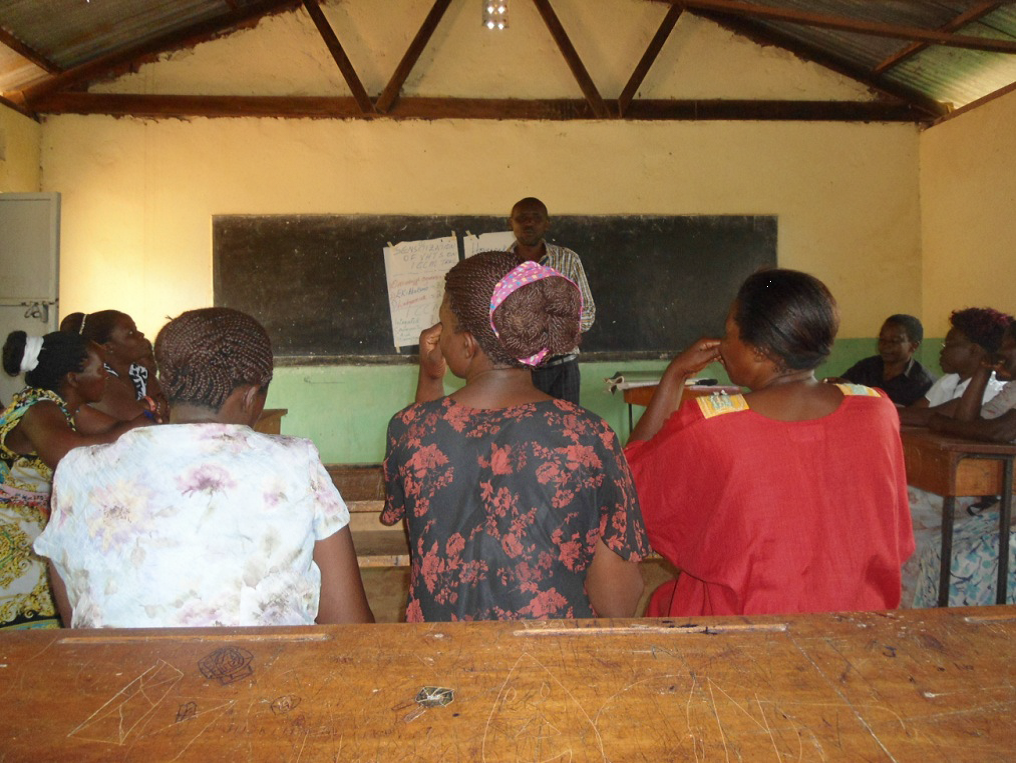|
PARTNERSHIPS FOR ENHANCED ENGAGEMENT IN RESEARCH (PEER) HEALTH
Cycle 1 Assessing the Effect of Strengthening the Referral of Children from the Private Health Sector and its Impact on Child Survival in Uganda
Principal Investigator: Anthony Mbonye, Makerere University School of Public Health NIH-Supported Collaborator: Philip LaRussa, Columbia University Title of NIH Award: Enhancing Training, Research Capacity and Expertise in HIV Care (ENTREE)
Project Dates: February 2014 - July 2017
Project Overview
Uganda’s under-five mortality is high, currently estimated at 90/1000 live births. Poor referral of sick children that seek care from the private sector is one of the contributory factors. The intervention conducted under this project aimed to improve timely referral and uptake of referral advice of children that seek care from private facilities. The private sector in this project included private clinics and registered drug shops. The project was implemented in Mukono District, central Uganda. This region was selected because a recent concluded trial in the district showed that drug shop vendors (DSVs) adhere to diagnostic test results, treat appropriately and refer sick children, although uptake of referral is poor. The main reasons attributed to the observed poor referral were negative attitude towards referral forms from drugs shops by the health workers at referral facilities, perceptions of poor quality of care at referral facilities and costs involved (Hutchinson. 2012).
This project was a follow up to address these factors with the aim to improve uptake of referral. The primary objective of the project was to assess the effect of strengthening the referral system on timely uptake of referral of sick children who seek care in the private sector. The secondary objectives were (1) to assess appropriate case management for malaria, pneumonia, and diarrhea; (2) to explore factors which influence the referral or non-referral of sick children from the private sector; and (3) to assess the cost effectiveness of uptake of referral of sick children who seek care in the private sector. A cluster randomized design was applied to test the intervention. In the intervention arm, village health teams sensitized communities on the importance of referral. Private outlets in both arms were trained to diagnose, treat, and refer children. The intervention had three components: (1) training of village health trainers (VHTs) to do community sensitization and initiate community discussions aimed at identifying community support mechanisms for financial hardship (to be community led and managed); (2) training and supervision of providers in the private sector to diagnose, treat, and refer sick children, and (3) regular meetings between the public and private providers (convened by the district health team) to discuss the referral system. The data generated from this study contributed to a better understanding of factors of importance for strengthening the referral system, including optimal training required, supervision activities, community participation, and the costs involved. The lessons learned are likely to inform programming at a national and district level to improve referral of children from the private sector.
Final Summary of Project Activities
A sample of study clusters implemented the intervention with ten randomly allocated to the intervention and ten to the control arm. The primary outcome was the proportion of sick children referred from the private sector were seen at higher level facilities:
In conclusion, adherence to the mRDT test was better in the intervention arm than the control arms. Overall referrals were very few, with no significant differences between the two arms. The improved case management in the intervention could have affected the referrals in that arm. The researchers also designed protocols and tools to conduct a community survey to assess uptake of referral and costs involved in taking up referral. They conducted 24 qualitative interviews: (i) six focus group discussions (FGDS) among care takers who recently had sick children (three among mothers and three for fathers) to assess their views why caretakers take up referral or not; (ii) four FGDs among health workers (private and public health workers together) to explore their perceptions about the referral system; (iii) eight key informant interviews (KIIs) with village health teams (VHTs) and community leaders (local council leaders) to understand whether the VHTs conducted community sensitization on referral as they were meant to; and (iv) six FGDs community members (three for women and three for men) to explore whether a financial scheme is acceptable to the population and if they think it can enable uptake of referral. The team published four papers on their work.
Publications
Anthony K. Mbonye, Esther Buregyeya, Elizeus Rutebemberwa, Sham Lal, Sian E. Clarke, Kristian S. Hansen, Pascal Magnussen, and Philip LaRussa. 2020. Treatment of Sick Children Seeking Care in the Private Health Sector in Uganda: A Cluster Randomized Trial. American Journal of Tropical Medicine and Hygiene 102(3): 658–666. https://doi.org/10.4269/ajtmh.19-0367
Esther Buregyeya, Elizeus Rutebemberwa, Phillip LaRussa, Sham Lal, Sian E. Clarke, Kristian S. Hansen, Pascal Magnussen, and Anthony K. Mbonye. 2017. Comparison of the capacity between public and private health facilities to manage under‑five children with febrile illnesses in Uganda. Malaria Journal 16:183. https://doi.org/10.1186/s12936-017-1842-8
Esther Buregyeya, Elizeus Rutebemberwa, Philip LaRussa, and Anthony Mbonye. 2016. Strengthening referral of sick children from the private health sector and its impact on referral uptake in Uganda: a cluster randomized controlled trial protocol. BMC Health Services Research 16:646. https://doi.org/10.1186/s12913-016-1885-5
Anthony K Mbonye, Esther Buregyeya, Elizeus Rutebemberwa, Sian E Clarke, Sham Lal, Kristian S Hansen, Pascal Magnussen, and Philip LaRussa. 2016. Prescription for antibiotics at drug shops and strategies to improve quality of care and patient safety: a cross-sectional survey in the private sector in Uganda. BMJ Open 2016;6:e010632. https://doi.org/10.1136/bmjopen-2015-010632
Health Cycle 1 Recipients
|




